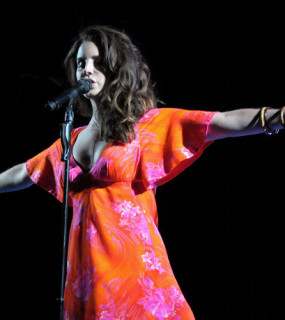James Blake – Sounds Of Silence
James Blake returned for a BBC Radio 1 Residency this evening, and was joined by Bon Iver‘sJustin Vernon. The two discussed the possibility of bringing Blake and his 1-800-Dinosaur crew to perform at Vernon’s hometown music festival, Eaux Claires. Vernon also showed off his Bob Dylan impression. Blake closed the show by sharing his cover of Simon & Garfunkel’s “The Sound of Silence”, which he dedicated to a friend who passed away on New Year’s Eve.
Read the rest of this article at Pitchfork
Majical Cloudz – Downtown
There’s an icy sense of malaise about Majical Cloudz latest single. “We’re going down-town,” Devon Walsh sings, elongating the first syllable of the track title as if to purposefully mislead the listener.
Under gentle, bubbling synths the track unwinds, a sedate mix vocally of someone who sounds both scared and elated at being in love. “I’m going crazy, crazy for you,” Walsh sings over and over at the song’s end, his voice tinged with emotion. But it’s the following line, delivered pensively halfway through, that’s the real sucker punch: “If suddenly i die, i hope they will say that he was obsessed and it was ok”.
Atmospheric and ambitious, it’s the perfect introduction to new album Are You Alone?, which drops on October 16.
Read the rest of this article at NME
Rival Consoles – Ghosting
London’s Erased Tapes seldom makes much of a dent on decibel meters. Most of the label’s roster—the Icelandic composer and Chopin specialist Ólafur Arnalds; jazz trio Dawn of Midi; experimental vibraphonist Masayoshi Fujita; and especially the liquid-fingered pianist Nils Frahm—favor acoustic instruments and hushed tones. Not so for Rival Consoles, aka Ryan Lee West, a London producer who was a guitarist before he began running synthesizers through his stomp-boxes.
“Ghosting”, from his album Howl, begins demurely enough, with softly purring bass arpeggios and a high-end shimmer reminiscent of Caribou or Four Tet. Soon, though, whippoorwilling pulses and tape warble lock into dizzying contrapuntal patterns, and buzzing synthesizers begin rocking the room’s foundations. The fuzzy harmonics and supersaturated tones squarely place West in the tradition of likeminded sound-shapers and floor-shakers like Jon Hopkins and James Holden, but there’s also a faint trace of Boards of Canada in his drifting, lilting melodies. True to his label’s example, even at his loudest, he opens up a space for delicate details.
Read the rest of this article at Pitchfork
Erykah-She lLL- Badu – HOTLINE BLING BUT U CAINT USE MY PHONE MIX
Some things are guaranteed to be a hit when they burst online. An Erykah Badu treatment of a Drake jam is one such supernova.
Badu just dropped her remix of “Hotline Bling,” Drake’s soothing, summer-ready track still riding its wave of public celebration. Badu’s is lengthier, clocking in at just under three minutes longer than the original. But her voice is irresistible throughout, adding lilt and light to Drake’s forlorn reflection.
I’m generally opposed to spoken interludes—they’re unwelcome interruptions that tend to bring out my inner Kendrick Lamar. Badu’s got some sass in this one though, and it only adds to the coy tone of the song. The mix was co-written by Seven Benjamin, Badu’s son with Andre 3000, so listen closely for the nod to Outkast’s “Ms. Jackson.”
Read the rest of this article at The Atlantic
EL VY – Paul Is Alive
EL VY is, of course, the side-project duo of the National frontman Matt Berninger and Menomena multi-instrumentalist Brent Knopf. Later this month, they’ll release Return To The Moon, their first album together, and we’ve posted the title track and “I’m The Man To Be.” And in related news: Taylor Swift apparently loves “Return To The Moon”; last night, she posted a Twitter playlist naming it one of the songs that “will make your life more awesome.” Momentum! This morning, the duo shared the lyric video for “Paul Is Alive,” a third song. Berninger’s brother Tom, who made the National documentary Mistaken For Strangers, directed the lyric video, and it’s not just letters on a screen. Instead, it shows the duo performing, hanging out at backyard parties, playing with big “EL VY” balloons, and swimming in the ocean. As for the song, it throws Berninger’s weathered, familiar baritone over playfully arranged pianos and electronic bloops. As with the other EL VY songs, it’s fun to hear him in a different context.
Read the rest of this article at Stereo Gum
News
Rise of the Synthesizer: How an Electronics Whiz Kid Gave the 1980s Its Signature Sound
In the summer of 1970, after popping into a pub for a pint, rock keyboardist Keith Emerson sat down at his enormous Moog modular synthesizer in London’s legendary Advision recording studio and noodled a few improvised notes. His goal was to add some electronic punch to the end of a mostly acoustic-guitar number called “Lucky Man,” written by his singer-guitarist bandmate, Greg Lake. As his fingers ran up and down the synthesizer’s keyboard, Emerson played along to the bass, drums, vocals, and guitars already recorded by Lake and drummer Carl Palmer. Their contributions were lovely, imbued with the traditional rhythms and melodies of folk music and warmed by the human voice. In contrast, Emerson’s notes were otherworldly, rising and falling in syrupy sweeps, as if propelled through a rollercoaster of resonant tubes.
Emerson would later say he was just fooling around, and that he definitely did not expect his first take to be his last, but Lake and sound engineer Eddie Offord liked what they heard so much, they deemed Emerson’s work on “Lucky Man” done.
Until that moment, classical music had been the genre of choice for aspiring synthesizer musicians like Wendy Carlos, whose 1968 album, “Switched-On Bach,” was recorded almost entirely on a Moog modular synthesizer, which had only been introduced in 1964. “Switched-On Bach” became a surprise hit, but it was the subsequent appearance of “Lucky Man” on international pop charts that helped make the synthesizer a favorite of rock musicians, too, and propelled Emerson, Lake & Palmer to stardom.
Read the rest of the story at Collectors Weekly
Lana Del Rey Is Exhausted

Even the earliest explorers of California were driven there, in part, by myth. In 1510, the Spanish writer Garci Ordóñez de Montalvo published “Las Sergas de Esplandián,” a pie-eyed fictional account of an “Island of California,” populated exclusively by Amazonian women, “robust of body with strong, passionate hearts and great virtue,” and situated “very close” to the Garden of Eden. It appears that the work was widely read, its inventions internalized. When a Spanish expedition first reached the western edge of North America and ran into a mountainous peninsula stretching into the Pacific, the sailors named it Baja California. Soon, cartographers began using “California” to indicate the entire western coastline. The appellation itself is a synecdoche. It originated as a fantasy.
In 2015, there is no better embodiment of California’s dizzying, orphic appeal than the singer and songwriter Lana Del Rey, herself a myth, the present-day iteration of Lizzy Grant, a girl who was born in New York City in 1985 and came of age in Lake Placid, a former Olympic boomtown deep in the Adirondack Mountains. Del Rey’s transformation is not singular, but mirrors the precise kind of aesthetic reinvention (a name change; perhaps some cosmetic surgery; the acquisition of many, many gossamer frocks) that aspiring starlets have been enacting since the advent of the studio system.
Read the rest of the story at The New Yorker



